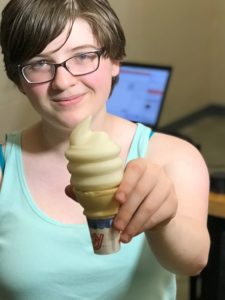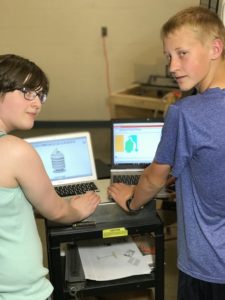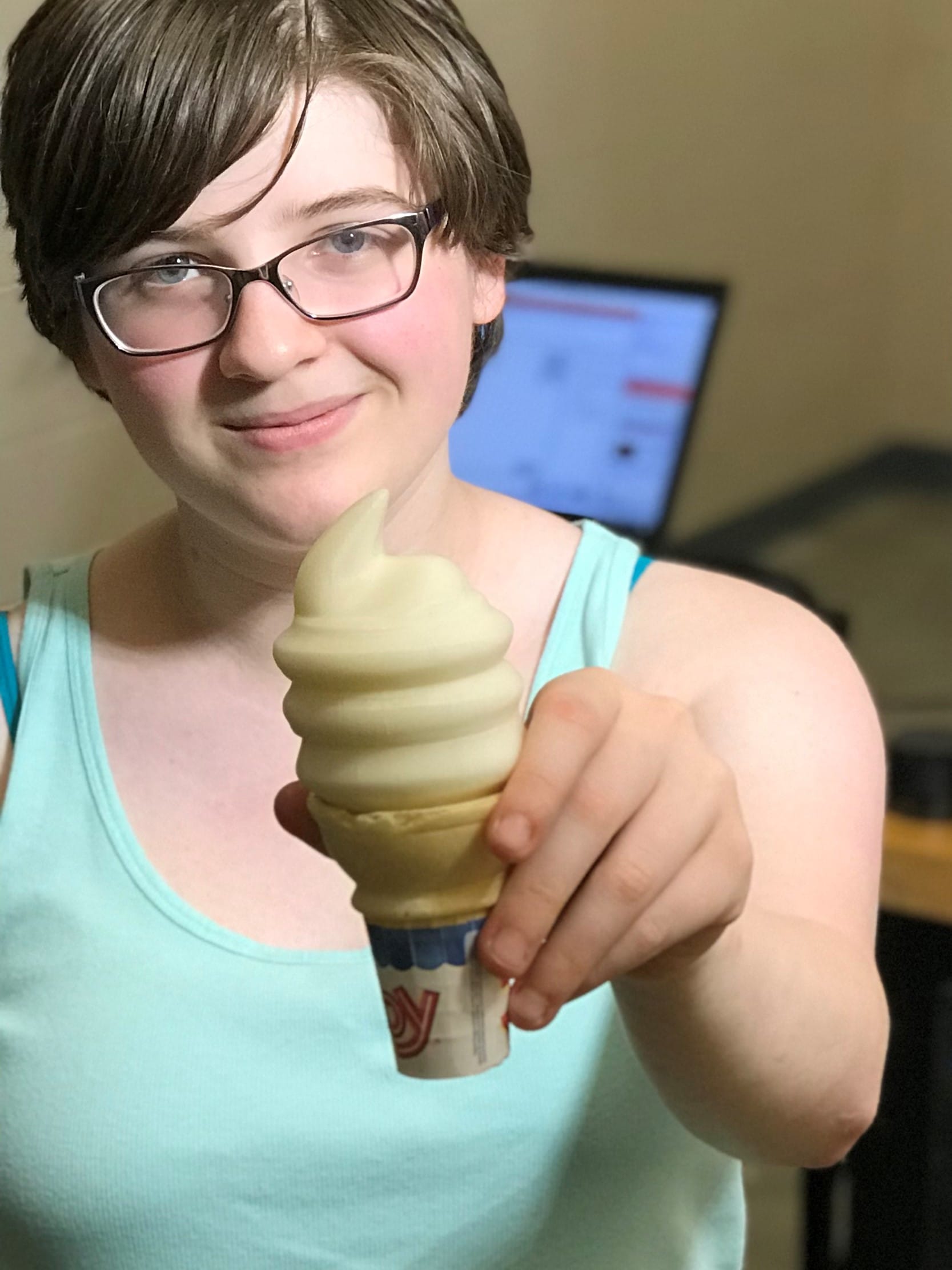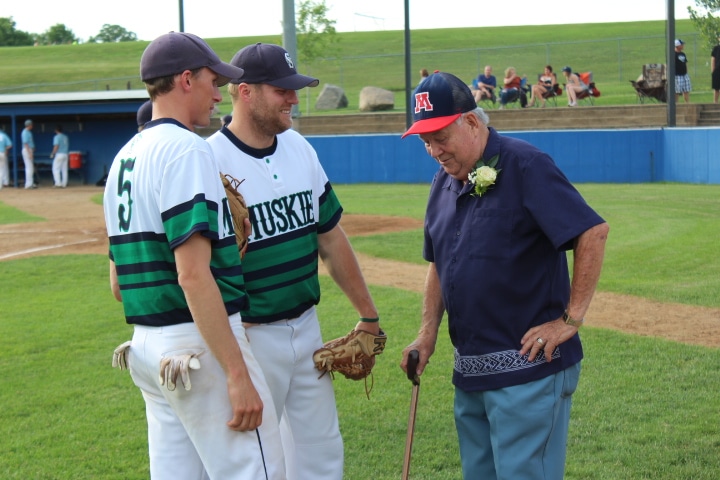by Dennis Dalman
It’s always the big question: “What size are your ice-cream cones?”
The employees at Mr. Twisty have had to struggle to answer that question time and time again. They would use their hands and fingers to approximate how tall the cones are, but that was too vague for a lot of customers.
Mr. Twisty, in a mini-mall near Westwood Elementary School in St. Cloud, is owned by Erich Rothstein and his wife, who live in Sartell. They bought the ice-cream shop last April. This is now the ninth year it’s been in business.
Mr. Twisty cones come in four sizes: Kiddie, Small, Medium, Large.
One day Erich Rothstein was talking with a neighbor about how he wishes he could have models made of his cones so customer could see at a glance how big each cone is. The man, who works for the Sartell-St. Stephen school district, told Rothstein he might be able to make his wish come true. The man later asked instructor Joe Schulte, and Schulte immediately came to the rescue.
Schulte is the industrial-arts teacher for the school district. The cone project, he decided, would be an ideal real-world problem to provide a hands-on learning experience for his students.
Rothstein was thrilled when he heard the news. He now calls the students’ project a “New Age answer to a delicious problem.”
Schulte’s Intro to Engineering Design class is comprised of ninth- and 10th-graders. It is a College-in-the-Schools program, and the project for the class is Product Improvement. Schulte said the students were eager to tackle the challenge, making the four sizes of ice-cream cone models from scratch, using a 3-D model printer, which was provided for use from St. Cloud State University.
First, the students went to Mr. Twisty where they meticulously measured every angle of the cone and its ice cream top. It was an intricate measuring challenge. Then they adapted all the coordinates of the measurements for the 3-D modeling machine.
The printer “prints” the plastic ice-cream cones in layers, building them up from a base plate. The resultant cones are an off-white plastic hue.
“The plastic is about the color of vanilla ice cream,” Schulte noted.
Two students who led the way by resolving technical challenges are Mikayla Emslander, 10th-grader; and Tyler Braegelmann, ninth-grader. Schulte praised them highly for taking the initiative to accept the difficult technical challenges of the project and working out solutions every step of the way.
Schulte said all of the four cone models were to be completed byJune. They will then be delivered to the Mr. Twisty shop. And when customers walk up to the serving window and start to ask, “What size are your . . . ?,” all an employee will have to do is smile and point to the four models.
After all, seeing is believing, and as instructor Schulte noted, “These cones don’t melt.”

Mikayla Emslander holds the finished product of the 3-D created model of the Mr. Twisty “Kiddie Size” ice-cream cone.

Mikayla Emslander and Tyler Braegelman do preparatory computer calculations for a 3-D production of model ice-cream cones. The students received high praise from their instructor for taking on the technical challenges of the “Mr. Twisty” project.




